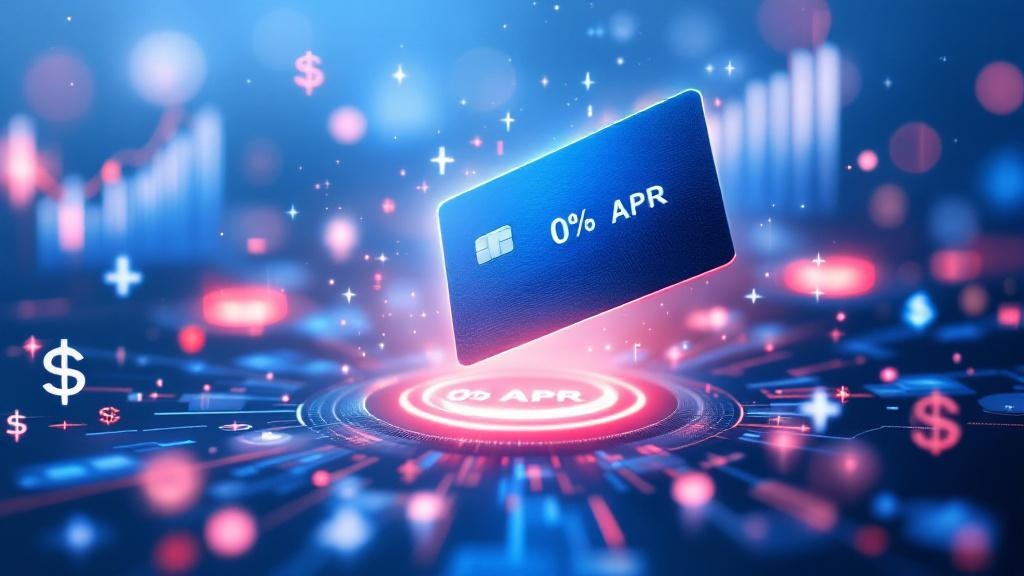If you’re trying to manage your credit card debt or looking to make a large purchase without immediate interest charges, 0% APR credit cards can be a game-changer. One of the most well-known providers in the credit card world is American Express. But how do you truly understand American Express credit card interest rates, and more importantly, how can you maximize the benefits of a 0% APR offer?
In this guide, we’ll break it all down in a way that’s simple, practical, and actually useful in real life—whether you’re a first-time cardholder or a seasoned credit user.
🔍 What Is APR and How Does It Work?
APR stands for Annual Percentage Rate, which reflects the yearly interest you’ll pay on borrowed money. It includes not just the interest rate, but also any fees or additional costs involved with using the card. This makes it a more accurate reflection of the total cost of borrowing.
There are several types of APR you should know:
Purchase APR: Charged when you carry a balance from month to month.
Balance Transfer APR: Applied when you move debt from one credit card to another.
Cash Advance APR: Applies when you withdraw cash using your card (usually very high).
Penalty APR: A higher rate applied if you miss payments.
Understanding how your American Express APR is calculated helps you make smarter decisions.
💳 American Express Credit Card Interest Rate: What to Expect
American Express credit card interest rates vary based on the type of card and your credit profile. Typically, Amex credit card rates range from 17% to 29.99% variable APR depending on the product.
Here’s a quick overview of interest categories for American Express:
| Type of Rate | Average Range (as of 2025) |
|---|---|
| Purchase APR | 18.24% – 29.99% Variable |
| Balance Transfer APR | 0% for 12–21 months (promo), then 18.24% – 27.99% |
| Cash Advance APR | Around 29.99% + fee |
| Penalty APR | Up to 29.99% |
Real-Life Example:
Say you get an Amex card with a 0% intro APR for 15 months on purchases and balance transfers. If you transfer a $5,000 balance and pay $334/month, you can pay it off before interest even kicks in!
🧠 APR vs. Interest Rate: What’s the Difference?
While often used interchangeably, APR and interest rate are not the same.
Interest Rate: This is the percentage you pay to borrow money, not including fees.
APR: This includes the interest rate plus additional fees (like balance transfer fees).
When evaluating American Express interest charges, always look at the APR—it gives a more complete picture.
💼 Choosing the Right Amex 0% APR Card
Not all 0% APR cards are the same. Some are better for balance transfers, others for purchases. Some offer better rewards, while others focus on low fees.
Key Factors to Compare:
Length of 0% APR period
Balance transfer fees (usually 3%–5%)
Regular APR after intro period
Rewards program
Annual fees
Best American Express Cards with Low Interest (2025):
Amex Blue Cash Everyday®
0% APR on purchases and balance transfers for 15 months
No annual fee
3% cash back on groceries and gas
Amex EveryDay® Credit Card
0% APR for 15 months
Great for balance transfers
2X points at supermarkets
Amex Cash Magnet® Card
Flat 1.5% cash back
0% intro APR for 15 months
Simple, no rotating categories
🧩 How to Maximize 0% APR Credit Card Benefits
Even the best 0% APR offer won’t help if you don’t use it strategically. Here’s how to get the most out of it:
1. Transfer High-Interest Balances Early
Move your balance within the first 60 days to qualify for the intro rate.
2. Pay More Than the Minimum
Minimum payments = maximum interest after promo ends.
3. Create a Payoff Plan
Divide the total by months left in the intro period and set auto-pay.
4. Avoid New Purchases (Unless APR Applies)
If the 0% only applies to transfers, new purchases could accrue interest.
5. Don’t Miss a Payment
Late payments can trigger the penalty APR, which can hit 29.99%—even during your 0% APR period.
⚖️ American Express Credit Card APR vs. Other Issuers
Compared to other major banks, American Express APR is competitive, especially on rewards cards. Here’s a quick side-by-side:
| Issuer | Intro APR | Regular APR | Balance Transfer Fee |
|---|---|---|---|
| Amex | 0% for 12–21 months | 18%–29.99% | 3%–5% |
| Chase | 0% for 15 months | 19%–29.99% | 3%–5% |
| Citi | 0% for 21 months | 18%–29.99% | 3%–5% |
So, if you’re choosing based on low APR + strong rewards, Amex is a solid bet.
💡 How to Lower American Express Interest
If you’re already carrying a balance, here are smart ways to reduce Amex interest charges:
Call and negotiate: Ask Amex for a reduced APR based on good payment history.
Use a balance transfer: Move your balance to another 0% APR card.
Pay biweekly: Split payments every two weeks instead of monthly—this reduces average daily balance.
Target highest APR balances first: Pay off cash advances before anything else.
📈 How Interest Is Calculated: Credit Card Finance Charges
American Express calculates interest daily, using your average daily balance.
Example:
If you carry a $3,000 balance and your APR is 20%, your daily periodic rate is 0.0548% (20% ÷ 365). Over 30 days:
The higher your balance, the more you pay. This is why paying off your Amex faster makes a big difference.
🧾 Statement Balance vs. Average Daily Balance
Statement Balance: Total amount owed as of your last billing cycle.
Average Daily Balance: The average of your daily balances—this is what interest is based on.
If you always pay the full statement balance, you won’t pay any interest at all. That’s the goal!
🤔 FAQs About American Express Credit Card Interest Rate
1. How is credit card interest calculated by American Express?
American Express uses a daily balance method, multiplying your daily balance by the daily periodic rate (APR ÷ 365) and summing it for the billing period.
2. What’s the difference between APR and interest rate on my Amex card?
The APR includes the interest rate and fees; it gives a more complete picture of your card’s cost.
3. How can I avoid high credit card interest rates on Amex?
Pay your balance in full each month, avoid cash advances, and try to keep your credit utilization below 30%.
4. Does paying more than the minimum on American Express reduce interest?
Absolutely. The more you pay, the less you owe, which directly lowers the interest accrued.
5. How do American Express rewards affect APR or interest?
They don’t directly reduce interest, but you can redeem rewards to offset your balance—effectively reducing your out-of-pocket cost.
6. Is it better to pay off the Amex statement balance or current balance?
Paying the current balance (which includes recent purchases) reduces your average daily balance further—lowering interest even more.
7. What’s the Amex interest rate for balance transfers in 2025?
Many cards offer 0% APR for 12–21 months, after which the rate typically goes to 18%–27.99% variable, depending on your credit.
🏁 Conclusion: Take Control of Your American Express Credit Card Interest Rate
Understanding how American Express credit card interest rates work empowers you to make the most of your card—whether it’s through 0% APR offers, smart balance transfer strategies, or just avoiding interest altogether by paying on time.
When used wisely, an Amex rewards credit card with an introductory 0% APR can help you manage debt, earn perks, and build your credit—all without paying extra in interest.








Comments (0)